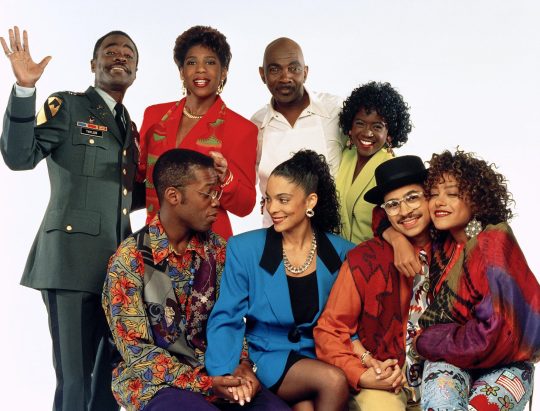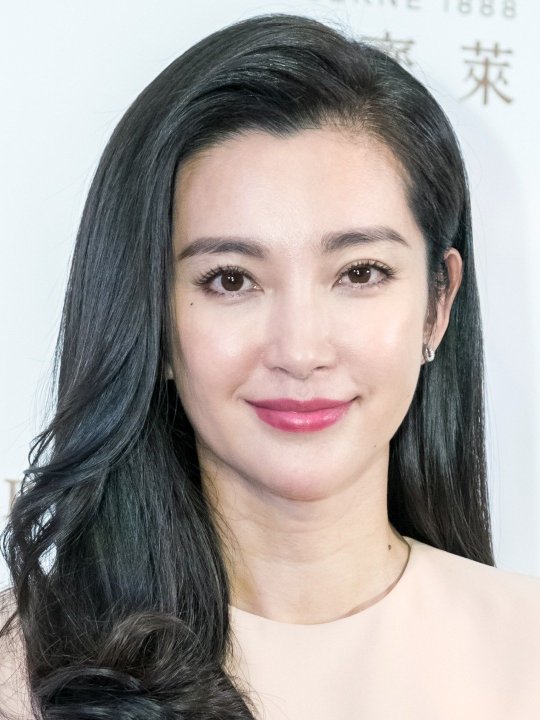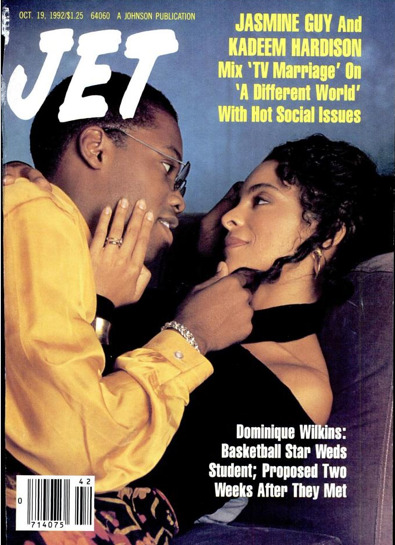#jet magazine 1993
Photo






A Different World Cast
Jet Magazine 1993
#a different world#90's#jasmine guy#kadeem hardison#dawnn lewis#cree summer#darryl bell#charlene brown#lou myers#glynn turman#photoset#tv#tv: 90's#1993#jet magazine#jet magazine 1993#mp*#whitley and dwayne#poc#black people
29 notes
·
View notes
Text

Geraldine Whittington (September 11, 1931 – January 24, 1993) was the personal executive secretary to President Lyndon B. Johnson and was the first African American secretary in the White House.
Johnson was famous for working long hours and insisting his assistants worked long hours as well. When John F. Kennedy was assassinated and Johnson became president, he requested a new slate of secretaries. He saw her working in a government office and requested that his assistant Jack Valenti get her home phone number. Johnson called her unannounced one evening and requested that she come in that night for an interview. According to audiotapes of Johnson’s phone calls, she at first thought the call was a joke, but came to believe that it was the president on the line. She applied for the job and was offered the position.
Having a Black woman in the White House was very unusual in the early 1960s. Johnson wanted to advertise the fact that he had hired a Black woman, but chose not to call a news conference. He arranged for her to appear on the television game show” What’s My Line?”, wherein contestants attempted to guess her profession. This may have seemed less overt but exposed her to more viewers than if a standard press conference had been held.
She appeared on episode #696 of the game show What’s My Line? On January 19, 1964. She was the first contestant. After she signed the blackboard as “Jerri Whittington,” she told host John Daly that she was from West River, Maryland. Her occupation was shown on the screen as “Secretary to President Johnson.” After her game, she described President Lyndon Johnson with the following words, “great warmth, fair, kind, a perfectionist.”
She appeared in several magazines, including Jet and Sepia.
She was the first person to learn that Justice Thurgood Marshall had been nominated by President Johnson to the Supreme Court. Minutes before LBJ made the official announcement, he took his nominee down to her office and said, “Here’s the next Supreme Court Justice!” She told friends that she thanked the President for choosing the first Black court justice. #africanhistory365 #africanexcellence
3 notes
·
View notes
Text

#Jet Magazine April 5, 1993., Marvin Gayes daughter Nona Gaye 💚🖤❤️📽️💿🎼🌹💘👑🎤✨
6 notes
·
View notes
Text
[ Resume of Daniel Herrington ]
- god fish
- urban legend
- magazine named after
- pinball
- 16 lighters
- levitator
- unseen on camera since 1993
- amature embroidery
- carver of fish shapes
- stole private jet
- A Count now
- know every dumpster with good food
- mental map of London better than cabbys since 1845
- Prince's childer
2 notes
·
View notes
Text

Jet Magazine 1993 cover with the Living Single cast.
#LivingSingle#TelevisionShow#Celebrities#90stv#1990s#90sTelevision#90sstyle#BlackMastodon#blackfriday#blackjoy#retro#nostalgia#QueenLatifah#KimFields#ErikaAlexander#kimcoles
5 notes
·
View notes
Text
Happy Birthday 🎂 🥳 🎉 🎈 🎁 🎊 To A Very Most Elegant Asian Beauty & Highly Regarded Amazing Actress Of Remarkable & Critically Acclaimed Roles In Both National of Her country & International Roles in the US & etc.
She is A Chinese Born Actress & Singer
She was born in Wuchang, Heilongjiang, China. She initially had no intention of becoming an actress and enrolled specifically in a high school for prospective school teachers. However, upon graduation, she discovered her interest in acting and was eventually persuaded by a friend to join the Shanghai Theatre Academy in 1993.
She rose to fame after starring in Zhang Yuan's Seventeen Years (1999), which won her the Best Actress Award in the 1999 Singapore Film Festival. In 2001, She starred in the television series Young Justice Bao, which propelled her to become one of the most famous actresses in China.
She was subsequently labelled as an "action actress" as she starred in a number of wuxia television series, such as Taiji Prodigy and Eight Heroes.
She achieved breakthrough with her performance in Feng Xiaogang's A World Without Thieves. She then starred in Dayyan Eng's romantic comedy film Waiting Alone, for which she received her first Best Actress nomination at the Golden Rooster Awards.
In 2009, She won Best Actress at the 46th Golden Horse Film Awards for her performance in The Message, about Japanese invaders in China who try to ferret out a spy among their Chinese collaborators.
She then starred in Tsui Hark's 2010 action-mystery film Detective Dee and the Mystery of the Phantom Flame. She played Shangguan Jing'er, a fictional character based on Shangguan Wan'er, a prestigious politician during the Tang Dynasty. She established her studio in the same year, co-starring and co-producing the film 1911 with Jackie Chan, which was released in September 2011 to celebrate the 100th anniversary of the Xinhai Revolution.
Her first-time in an English-language film is Wayne Wang's Snow Flower and the Secret Fan, adapted from Lisa See's 2005 novel of the same title. The film premiered at the 2011 Cannes Film Festival. She started to gain recognition in Hollywood after starring in Resident Evil: Retribution, playing Ada Wong. The same year, she was cast in action fantasy film 400 Boys, directed by British director Alastair Paton.
In 2013, She attended the 4th Annual US-China Film Summit and received the East-West Talent Award. Hollywood magazine Variety also named her Asian Star of the Year. The following year, She was featured in Transformers: Age of Extinction, the fourth installment of the film franchise. This helped solidify her success overseas.
In 2015, she was cast in 3D science fiction thriller Nest (also known as Guardians of the Tomb), a Chinese-Australian co-production that was finally released in January 2018. The same year, it was announced that She would play China's first female superhero in upcoming film Realm, written by Stan Lee.
In 2018, She starred with Jason Statham in The Meg, an American-Chinese shark film based on Steve Alten's 1997 novel Meg: A Novel of Deep Terror.
Her Best Well Know Role Is In the 2008 Martial Arts Film
Starring Jackie Chan & Jet Li
In
THE FORBIDDEN KINGDOM
As She Played The Iconic & Infamous China's Villainous Character in Chinese Martial Arts Films.
THE WHITE HAIRED WITCH 🧙♀️
She Is A Very Well Know Established Actress In China 🇨🇳 1 of the Many Great Actresses today
& A Charity Ambassador Of The Shanghai World 🌎 Expo & A Goodwill Ambassador Of UNEP
Even though she may not look it. She has aged Very Gracefully & Amazingly over the many years. As A Bad@$$ Action Actress In Wushia
Please Give A Very Well Round of Applause & A Very Happy Birthday Wishes To
The 1
& The Only
MS. LI BINGBING / BING BING LI
HAPPY 50TH BIRTHDAY 🎂 🥳 🎉 🎈 🎁 🎊 TO YOU MS. BINGBING & Here's To Many More 💖





3 notes
·
View notes
Text
Namrata Goyal: A Visionary Leader in Aviation, Film, and Philanthropy
Born on September 4, 1990, in Mumbai, Maharashtra, India, Namrata Goyal is celebrated as the daughter of Indian business magnate Naresh Goyal, renowned as the owner of Jet Airways, one of India’s premier private airlines. Naresh Goyal, a prominent figure in Indian business circles, founded Jet Airways in 1993 with initial support from Tail Winds Incorporated, Isle of Man, thus initiating a remarkable journey in aviation history. His entrepreneurial prowess led to Jet Airways’ successful IPO in 2005, catapulting him to the ranks of India’s wealthiest individuals, as noted by Forbes magazine.

Namrata Goyal, born to Naresh Goyal and Anita Goyal, and sister to Nivaan Goyal, has left an indelible mark in her own right. Educated at ESADE Business School, she emerged as a beacon of innovation and leadership in the aviation industry, echoing her father’s legacy while charting her unique course. Holding the esteemed position of Executive Vice President for Revenue Management and Network Planning at Jet Airways, Namrata’s influence extends far beyond the airline’s confines.
In her role, Namrata orchestrates strategic and operational facets, navigating the complex waters of network development, pricing strategies, and revenue optimization. Her adept leadership has propelled Jet Airways to expand its domestic and international footprint, enhancing profitability and overall performance.
Beyond aviation, Namrata is a versatile individual, equally at home in the realms of film production and social activism. As co-founder and director of Moxie Entertainment, a film production company, she champions the creation of meaningful and impactful content, with projects like Masaan, Zubaan, Rukh, and Manto garnering critical acclaim and awards.
Namrata’s commitment to social causes is equally commendable. As co-founder and trustee of the Indian Film Festival of Melbourne, she showcases Indian cinema and culture globally. Additionally, she serves as co-founder and president of the Mijwan Welfare Society, an NGO focusing on rural community development and empowerment in Uttar Pradesh.
Namrata actively supports causes like the Aseem Foundation for acid attack victims and organizations like UNICEF, Smile Foundation, and Save the Children, embodying compassion and activism in equal measure.
Recognized for her achievements, Namrata features in prestigious lists like Forbes India 30 Under 30 and Fortune India 40 Under 40. She has been honored with the Nari Shakti Puraskar, the highest civilian award for women in India, and the Women Achievers Award from the Indo-American Chamber of Commerce.
Her philanthropic spirit and leadership inspire young women and aspiring entrepreneurs, shaping a brighter future for India and beyond. Namrata Goyal, with her vision, creativity, and compassion, leaves an enduring legacy in aviation, film, and humanitarian endeavors, touching lives and hearts around the world.
0 notes
Text
Namrata Goyal: A Visionary Leader in Aviation, Film, and Philanthropy
Born on September 4, 1990, in Mumbai, Maharashtra, India, Namrata Goyal is celebrated as the daughter of Indian business magnate Naresh Goyal, renowned as the owner of Jet Airways, one of India’s premier private airlines. Naresh Goyal, a prominent figure in Indian business circles, founded Jet Airways in 1993 with initial support from Tail Winds Incorporated, Isle of Man, thus initiating a remarkable journey in aviation history. His entrepreneurial prowess led to Jet Airways’ successful IPO in 2005, catapulting him to the ranks of India’s wealthiest individuals, as noted by Forbes magazine.

Namrata Goyal, born to Naresh Goyal and Anita Goyal, and sister to Nivaan Goyal, has left an indelible mark in her own right. Educated at ESADE Business School, she emerged as a beacon of innovation and leadership in the aviation industry, echoing her father’s legacy while charting her unique course. Holding the esteemed position of Executive Vice President for Revenue Management and Network Planning at Jet Airways, Namrata’s influence extends far beyond the airline’s confines.
In her role, Namrata orchestrates strategic and operational facets, navigating the complex waters of network development, pricing strategies, and revenue optimization. Her adept leadership has propelled Jet Airways to expand its domestic and international footprint, enhancing profitability and overall performance.
Beyond aviation, Namrata is a versatile individual, equally at home in the realms of film production and social activism. As co-founder and director of Moxie Entertainment, a film production company, she champions the creation of meaningful and impactful content, with projects like Masaan, Zubaan, Rukh, and Manto garnering critical acclaim and awards.
Namrata’s commitment to social causes is equally commendable. As co-founder and trustee of the Indian Film Festival of Melbourne, she showcases Indian cinema and culture globally. Additionally, she serves as co-founder and president of the Mijwan Welfare Society, an NGO focusing on rural community development and empowerment in Uttar Pradesh.
Namrata actively supports causes like the Aseem Foundation for acid attack victims and organizations like UNICEF, Smile Foundation, and Save the Children, embodying compassion and activism in equal measure.
Recognized for her achievements, Namrata features in prestigious lists like Forbes India 30 Under 30 and Fortune India 40 Under 40. She has been honored with the Nari Shakti Puraskar, the highest civilian award for women in India, and the Women Achievers Award from the Indo-American Chamber of Commerce.
Her philanthropic spirit and leadership inspire young women and aspiring entrepreneurs, shaping a brighter future for India and beyond. Namrata Goyal, with her vision, creativity, and compassion, leaves an enduring legacy in aviation, film, and humanitarian endeavors, touching lives and hearts around the world.
0 notes
Text

item # K22A58
RARE Pra Pong Buddha-khun Luang Phor Jamnian, Roon Jet Pacha Piset, Sao Ha. A holy powder amulet with a bas-relief of Luang Phor Jamnian sitting on a seat cushion with his legs crossed, and holding an amulet scepter, in the back is with imprints of Yant Gam-nert, Thai texts say “Jet Pa Cha”(7 cemeteries), and “Piset”(special). This amulet was made from holy powder blended with powder crushed from ash and bones of the dead collected from 7 most haunted cremation sites of Thailand (Gradook Phee Tai Hong Jet Pacha). Specially made by Luang Phor Jamian of Wat Tam Sua, Krabi Province on Sao Ha Day (the Saturday, the fifth day of the month on Thai lunar calendar) in BE 2536 (CE 1993) as requested by Archan Kema Sukho Pikku for a gift to commemorate the 6th issue of Buddha-khun Buddha Amulet Magazine.
…………………………………………………………..
The process of making Buddha amulet that contains human remains with mystical herb/plants, and other holy materials is known as “Pong Prai Kumarn Maha Phood”, the Guru Monks who have ability to make this type of Holy Powder must have “Vicha Arkom” to control spirits that come with human remains and those sacred herb, NOT every monk could make Pong Prai Kumarn Maha Phood. It would bring disaster to those who made and those who wear amulets that contain this type of Holy Powder if the process of making was completely wrong! But the amulets made by Luang Phor Jamian have proven themselves to the wearers to be one of Thailand’s Best Pra Pong Gradook Phee.
…………………………………………………………..
BEST FOR: This amulet helps blind people who have bad intentions to do harm to you. The ghosts in this amulet trick your enemies with both visual and auditory hallucinations for your own safety. And the ghosts hypnotize people around you to be put in trance states, and do whatever you direct them to. Ability of temptation and persuasion, Klawklad Plodpai (it helps push you away from all danger), Kongkraphan (it makes you invulnerable to all weapon attack), Maha-ut (it stops gun from shooting at you or misses its target), and Metta Maha Niyom (it makes people around you love you, be nice to you, and willing to support you for anything), Wealth Fetching, Maha Larp (it brings lucky wealth), Metta Maha Niyom (it makes people around you love you, be nice to you, and willing to support you for anything), Kaa Kaai Dee (it helps tempt your customers to buy whatever you are selling, and it helps attract new customers and then keep them coming back, Maha Sanay (it helps turn you to Prince Charming in the eyes of women/men). It warns danger coming ahead. And Ponggan Poot-pee pee-saat Kunsai Mondam Sa-niat jan-rai Sat Meepit (it helps ward off evil spirit, demon, bad ghost, bad omen, bad spell, curse, accursedness, black magic, misfortune, doom, and poisonous animals). This amulet helps protect you from manipulators, backstabbers, and toxic people.
…………………………………………………………..
Gradook Phee Tai Hong Jet Pacha
The human bone powder which were taken from 7 most haunted cremation sites. The Phee Tai Hong in Thai refers to death due to violence for example; homicide, suicide, traffic-related death. Those hairs of Phee Tai Hong used for making this amulet had to die on Saturday, and had their body cremations on Tuesday.
The spirit of Phee Tai Hong is believed to be trapped in the purgatory, and sunk in its own thought. Purgatory, also called The World between Worlds, is a spiritual realm that traps lost and tortured souls. Guru monks or White Robe Archan who has highest ability of magic to pull spirits of Phi Tai Hong out of the purgatory, and later enter the physical realm (human world), and ask his/her spirit to stay in the amulets. The spirit in this amulet will help its master to do anything his/her asks for, and the spirit would gain merits from helping its master, and carry its merits to the next world.
…………………………………………………………..
The Sao Ha Day
The Sao Ha Day is the Saturday, the fifth day of the month on Thai lunar calendar, and according to ancient Thai Astrology, the Sao Ha Day is the day of “Keun Reu Ram Ha Kam” which means New Moon or waxing crescent moon of a Lunar Phase, and “Deuan Ha” which means fifth month of Thai Lunar Calendar / Month of April. It happens once in every 2-3 years. And the Soa Ha day is the most auspicious day for having Buddha amulets Blessing Ceremony which the highest power of “Kongkraphan Chatrie” (being invulnerable to all weapon attack), “Klawklad Plodpai” (pushing you away from all danger), and Maha-ut (stopping gun from shooting at you or the gun aiming at you would miss the target).
Thais believe that people who were born on this day would be protected by Thep Pra Sao Devaraj (God of Saturday), Thep Pra Sao was created by Hindu Lord Shiva. Lord Shiva crushed 10 of great Tiger Kings into powder, and wrapped with purple and black pieces clothes, sprung with elixir of immortality. The Saturday people were born with auspicious blessing from Thep Pra Sao Devaraj with prestige, and power to win over all difficulties in life.
Thep Pra Sao Devaraj AKA Saturn is the sixth planet from the Sun and the second-largest in the Solar System, after Jupiter.
…………………………………………………………..
YANT GAM-NERT
The Hypnotic Spiral Cabalistic Writings or Yant Gam-nert in Thai, it is believed that this magical Yant Gam-nert has a power of hypnosis those persons who are around the amulet with Yant Gam-nert would be hypnotized they would be put in trance states, and do whatever you direct them to.
…………………………………………………………..
*This amulet contains human remains. Not suitable for people who have Spectrophobia (the fear of ghosts). People who have Spectrophobia cannot control themselves while experiencing ghosts, they might have sudden cardiac death or cause harm to themselves from temporary loss of consciousness.
…………………………………………………………..
DIMENSION: 2.50 cm high / 2.00 cm wide / 0.50 cm thick
…………………………………………………………..
item # K22A58
Price: price upon request, pls PM and/or email us [email protected]
100% GENUINE WITH 365 DAYS AUTHENTICITY GUARANTEE.
Item location: Hong Kong, SAR
Ships to: Worldwide
Delivery: Estimated 7 days handling time after receipt of cleared payment. Please allow additional time if international delivery is subject to customs processing.
Shipping: FREE Thailandpost International registered mail. International items may be subject to customs processing and additional charges.
Payments: PayPal / Western Union / MoneyGram /maybank2u.com / DBS iBanking / Wechat Pay / Alipay / INSTAREM / PromptPay International / PAYNOW
******************************************************
0 notes
Text
Difference between Augmented Vs Virtual Reality
Augmented reality (AR) and virtual reality (VR) are evolving more and more appropriately nowadays. Both technologies keep so much in standard while also existing very different. So, in this article, we will try to describe the difference between AR and VR.

AR and VR are technologies best defined as immersive 3-D experiences employing advanced devices. Despite using the same technology and hardware, both are quite diverse in terms of experiences and use points.
The difference between VR and AR reaches down to virtual and real-world environments. AR utilizes a real-world setting while VR is an entirely virtual world. VR often requires a headset appliance, but AR can be accessed even with a smartphone. AR can even incorporate virtual and real-world, while VR is just limited to a fictional fact.
What is Augmented Reality (AR)?
Augmented Reality (AR) is a digitally improved version of reality where users can interact with computer interfaces similar to a smartphone or an app. It incorporates both the real and virtual elements to give a real-time interactive experience between both worlds.
Suppose a computer UI screen appears in front of your eyes, working the same way as your smartphone. This kind of relation between the real and virtual world is the importance of AR. The most famous instances would be the Snapchat AR filters and Pokémon GO.
What is Virtual Reality (VR)?
Virtual Reality is a computer-generated background that people can share through sensory stimulation, i.e., visual and auditory, making the surroundings immersive and real. In VR, you can experience a dream world or travel the world from the convenience of your home.
VR technology needs a lot of elements to function. For example, you’ll require a VR Headset, controllers to interact with the environment, and a device that can take the processing power required to run VR applications.
Virtual Reality comes from the importance of “virtual” and “reality.” In layman’s terms, it involves experiencing things that only exist in a computer simulation. Also, you could call it an illusion if you liked.
When virtual reality and augmented reality were first introduced?
While primitive virtual reality techniques got their beginning in the 1950s and 1960s, the ideas of VR and AR started to achieve momentum in military applications during the early 1980s. Motion graphics such as Tron, The Matrix, and Minority Report all offered futuristic riffs on how these technologies would evolve in the years to arrive.
The first mainstream attempt at emitting a VR headset was the Sega VR in 1993, an add-on to the Sega Genesis gaming system. While it never pushed it to market, it did stoke customer appeal in the technology. It would not be until the Oculus Rift in 2010 that a VR headset would be victorious with a customer audience — though today these machines remain costly and largely of niche interest, gaming-focused users.
Augmented reality splintered from the virtual reality around 1990, and was carried to the public’s attention in 1998 when TV broadcasters started overlaying a yellow line on the football field to sufficiently show the distance to a first down. Over the next era, several apps around AR technology were designed for both military use (such as in fighter jet cockpits) and user, when print magazines and packaged goods started embedding QR codes that could be scanned with a customer cell phone, making the product “come alive” with a short 3D video.
In 2014, Google moved out of Google Glass, to provide everyone with a head-mounted display AR device. The AR headset, which was controlled through voice and touch gestures, was met with skepticism and criticism, attributed to the new reality that people were recording video 24/7 in public. Privacy unexpectedly became a major talking point in customer AR. Google ultimately suspended the project and relaunched it a few years later with business users in mind.
How do AR works?
AR uses computer vision, mapping as well as depth tracking to present appropriate content to the user. This functionality allows cameras to gather, send, and process information to show digital content appropriate to what any user is looking at.
In Augmented reality, the user’s physical environment is increased with contextually relevant digital content in real-time. You can experience (AR) augmented reality with a smartphone or with certain hardware.
How do VR work?
The focus of virtual reality is on affecting the vision. The user requires to put a VR headset screen in front of his/her eyes. Therefore, stopping any relations with the real world. In VR, two lenses are fixed between the screens. The user requires to adjust eyes based on the individual action of the eye and its positioning. The graphical illustrations on the screen can be rendered by using an HDMI cable connected to a PC or mobile phone.
Uses speakers, goggles, and sometimes handheld wearables to simulate a real-world experience. In virtual reality, you can also engage visual, haptic (touch) stimulation, and auditory, so the constructed reality is immersive.
The distinction between Virtual Reality (VR) and Augmented Reality (AR)
Here are the most important distinctions between Augmented Reality (AR) and Virtual Reality (VR):
Augmented Reality (AR)
• The method augments the real-world scene
• In AR Users consistently have a sense of existence in the real world
• AR is 25% virtual and 75% real
• This technology partly engages the user in the action
• AR needs upwards of 100 Mbps bandwidth
• No AR headset is required.
• With AR, end-users are even in touch with the real world while interacting with virtual objects nearer to them.
• It is used to enhance both virtual and real worlds.
Virtual Reality (VR)
• The fully immersive virtual environment
• In VR, visual senses are under the command of the system
• VR is 75% virtual and 25% real
• This technology completely immerses the user into the action
• VR needs at least a 50 Mbps connection
• Some VR headset device is required.
• By using VR technology, the VR user is disconnected from the real world and immerses himself in a completely fictional world.
• It is used to improve fictional reality for the gaming world.
Advantages of Augmented Reality (AR)
Here are the pros/benefits of Augmented Reality:
• Presents individualized learning
• Fostering the learning method
• A vast variety of areas
• Offers creation and continuous advancement
• Improve accuracy
• Augmented reality can be used to improve user knowledge and data.
• People can share experiences over long distances.
• Helps developers to create games that offer a “real” experience to the user.
Advantages of Virtual Reality (VR)
Here are the pros/benefits of Virtual Reality:
• Immersive learning
• Make an interactive environment
• Improve work capabilities
• Deliver convenience
• One of the most important benefits of VR is that it helps you to make a realistic world so that the user can explore the world.
• Virtual reality in the teaching field makes education easy and comfortable
• Virtual reality authorizes users to test with an artificial environment.
Disadvantages of Augmented Reality
Here are the cons/drawbacks of Augmented Reality:
• It is costly to execute and develop AR technology-based projects and to keep them.
• The absence of privacy is a major drawback of AR.
• The low-performance level of AR devices is a major drawback that can occur during the testing stage.
• Augmented reality can generate mental health problems.
• Lack of protection may affect the overall augmented reality principle.
• Extreme engagement with AR technology can guide major healthcare problems such as eye issues and obesity etc.
Disadvantages of Virtual Reality
Here are the cons/drawbacks of Virtual Reality:
• VR is evolving much more familiar, but programmers will never be able to interact with virtual environments.
• Escapism is unremarkable among those that use VR environments, and people begin living in the virtual world instead of dealing with real-world problems.
• Training with a virtual reality environment never has the same outcome as training and working in the real world. This means if somebody has done well with simulated tasks in a VR environment, there is still no guarantee that a person doing well in the real world.
Applications of Augmented Reality (AR)
Here are the major applications of AR technology:
• AR apps are being created that embed text, images, videos, etc.
• The printing and advertisement industries are using AR technology apps to display digital content on top of real-world magazines.
• AR technology authorizes you the evolution of translation apps that allows you to interpret the text in other languages for you.
• With the help of the Unity 3d Engine tool, AR is being used to create real-time 3D Games.
Applications of Virtual Reality (VR)
Here are the major applications of VR:
• VR technology is used to create and improve a fictional reality for the gaming world.
• VR can use by the military for flight simulations, battlefield simulations, etc.
• VR is employed as a digital training machine in many sports to help to calculate a sports person’s performance and examine their techniques.
• It is also becoming a primary way of treating post-traumatic stress.
• Using VR devices such as Google Cardboard, Oculus Rift, HTC Vive, users can be transported into real-world and imaginary environments like squawking penguin colonies or even the back of a dragon.
• VR technology offers a safe environment for patients to come into contact with things they fear.
• Medical students use VR to practice techniques
• Virtual patients are utilized to help students to acquire skills that can later be applied in the real world.
How do AR and VR work together?
It will be incorrect to express that Augmented Reality and Virtual Reality are intended to work separately. They mostly agreed to develop an enhanced engaging experience when these technologies are merged to transport the user to the fictional world by giving a new measurement of the interaction between the real and virtual world.
#virtual reality#Virtual Reality application#iot application services#web development#android application development#data visualization#artificial intelligence#mobile app design services#machine learning#perfectiongeeks
0 notes
Photo




Jasmine Guy & Kadeem Hardison
A Different World
#a different world#90's#jasmine guy#kadeem hardison#whitley gilbert#dwayne wayne#tv: 90's#jet magazine#essence magazine#mp*#photoset#essence magazine 1991#jet magazine 1991#jet magazine 1992#jet magazine 1993#black people#nostalgia#fav!tv#whitley and dwayne
106 notes
·
View notes
Text

Maxima Corporation, a computer systems, and management company was incorporated on February 14, 1978. Headquartered in Lanham, MD, it will become one of the largest African-American-owned companies and earn its founder, chairman, and CEO, Joshua I. Smith, chairmanship of the US Commission on Minority Business Development.
By 1993 the company had revenues over $41 million and had been ranked by Black Enterprise magazine at number 33 in its list of minority businesses. In 1996 the company had expanded to operate in 14 US states, employing 800 members of staff. Smith serves as a trustee on several boards and has been a strong advocate for African American entrepreneurship. According to Jet magazine, Smith became the “leading spokesman for Black businessmen under the Reagan and Bush administrations”. In 1989, he was appointed by President George H. W. Bush to be the chair of the Commission on Minority Business Development. Smith’s recommendations for improving a lot of small businesses from minority groups were largely ignored by the President. The company filed for bankruptcy protection in 1998. #africanhistory365 #africanexcellence
0 notes
Text
The first semiconductor image sensor was the charge-coupled device (CCD), invented by Willard S. Boyle and George E. Smith at Bell Labs in 1969,[5] based on MOS capacitor technology.[6] The NMOS active-pixel sensor was later invented by Tsutomu Nakamura's team at Olympus in 1985,[7][8][9] which led to the development of the CMOS active-pixel sensor (CMOS sensor) by Eric Fossum's team at the NASA Jet Propulsion Laboratory in 1993.[10][8]
In the 1960s, Eugene F. Lally of the Jet Propulsion Laboratory was thinking about how to use a mosaic photosensor to capture digital images. His idea was to take pictures of the planets and stars while travelling through space to give information about the astronauts' position.[11] As with Texas Instruments employee Willis Adcock's film-less camera (US patent 4,057,830) in 1972,[12] the technology had yet to catch up with the concept.
The Cromemco Cyclops was an all-digital camera introduced as a commercial product in 1975. Its design was published as a hobbyist construction project in the February 1975 issue of Popular Electronics magazine. It used a 32×32 metal-oxide-semiconductor (MOS) image sensor, which was a modified MOS dynamic RAM (DRAM) memory chip.[13]
Steven Sasson, an engineer at Eastman Kodak, invented and built a self-contained electronic camera that used a CCD image sensor in 1975.[14][15][16] Around the same time, Fujifilm began developing CCD technology in the 1970s.[17] Early uses were mainly military and scientific; followed by medical and news applications
0 notes
Photo

Macworld July 1993
The LC III led off this issue’s review section, with the PowerBook 165c and the Apple Adjustable Keyboard receiving rather more negative reviews later on. Adrian Mello’s editorial had to deal with “keeping from buying a soon-to-be-obsolete computer,” given how soon the Centris 650 had followed the Macintosh IIvx. A special report and Steven Levy’s column took on the charged issue of electronic threats to privacy ranging from surveillance by your business to federally mandated backdoors, but Guy Kawsaki’s back-page column got to talk about how he’d been given a ride in an F-15, striving to connect that to the rest of the magazine by comparing the fighter jet to a Quadra 800.
(As it turned out, many years after the LC III had shown up just months after my family had bought an LC II, I managed to get my hands on one of the later, more positively regarded computers from a distant relative who collected old computers but was more interested in minicomputers than micros. However, I didn’t do much with it other than see if it still powered up...)
13 notes
·
View notes

